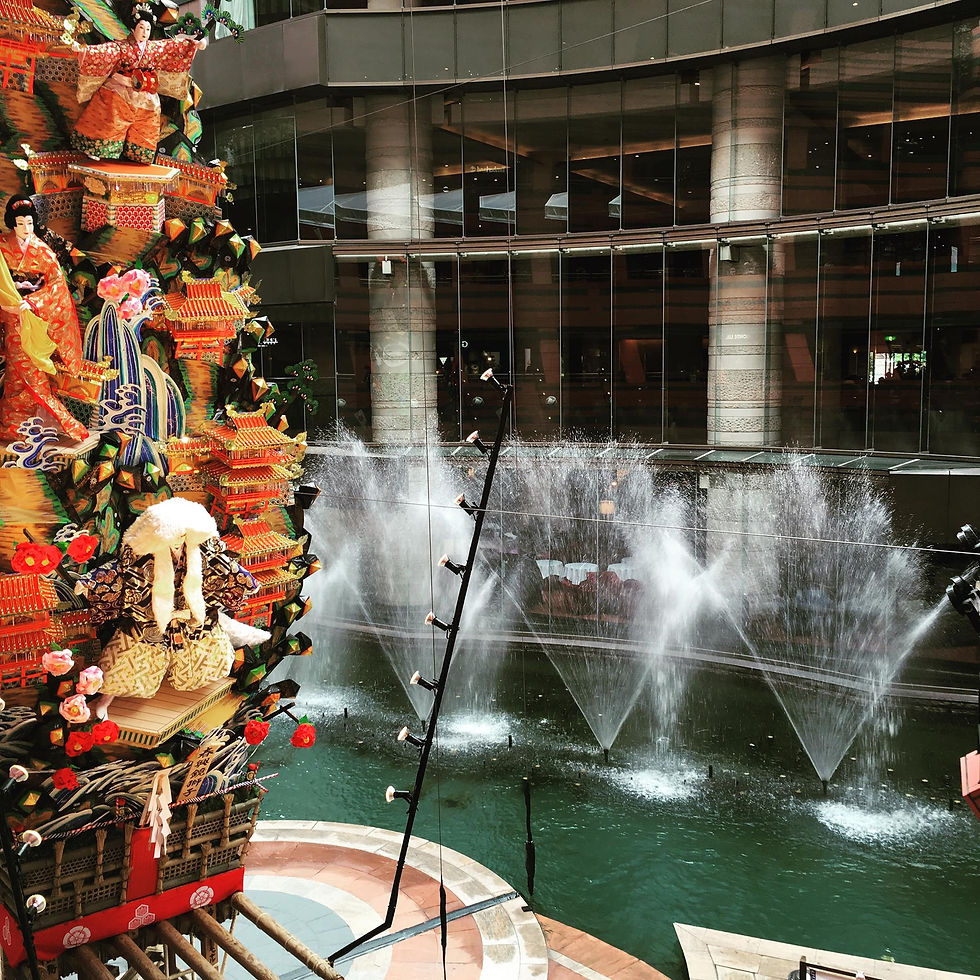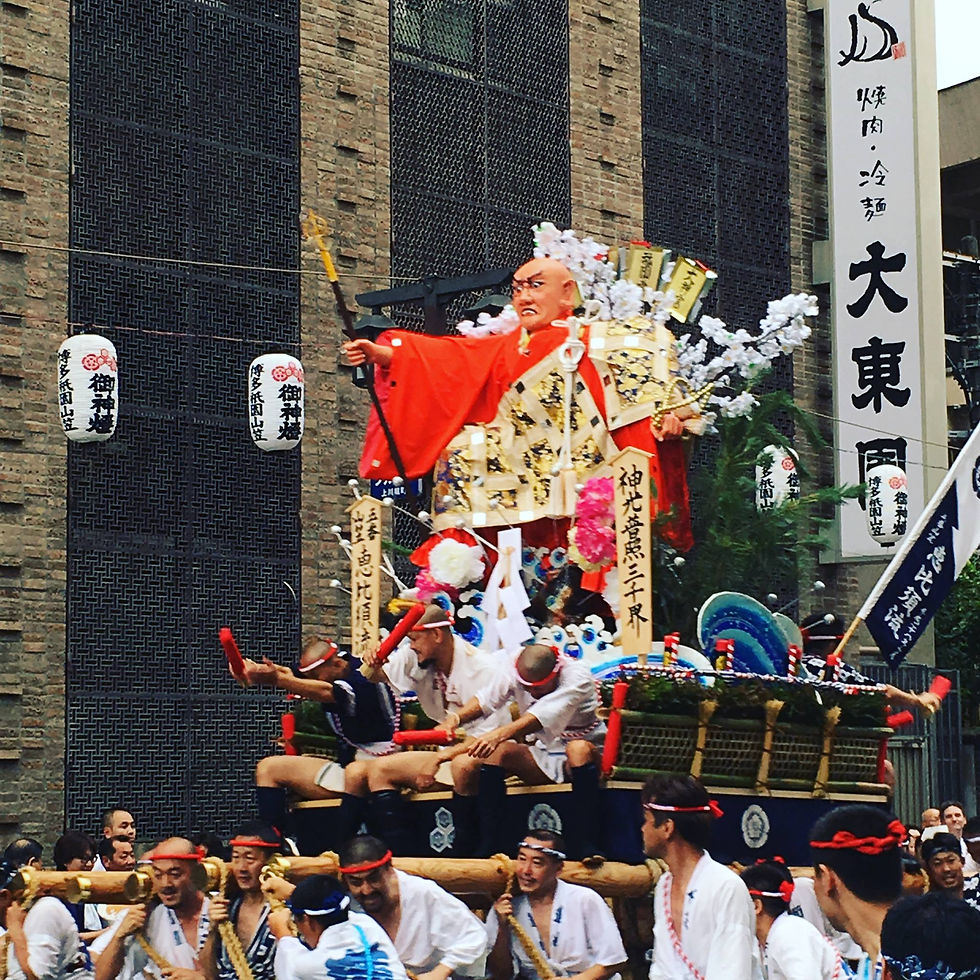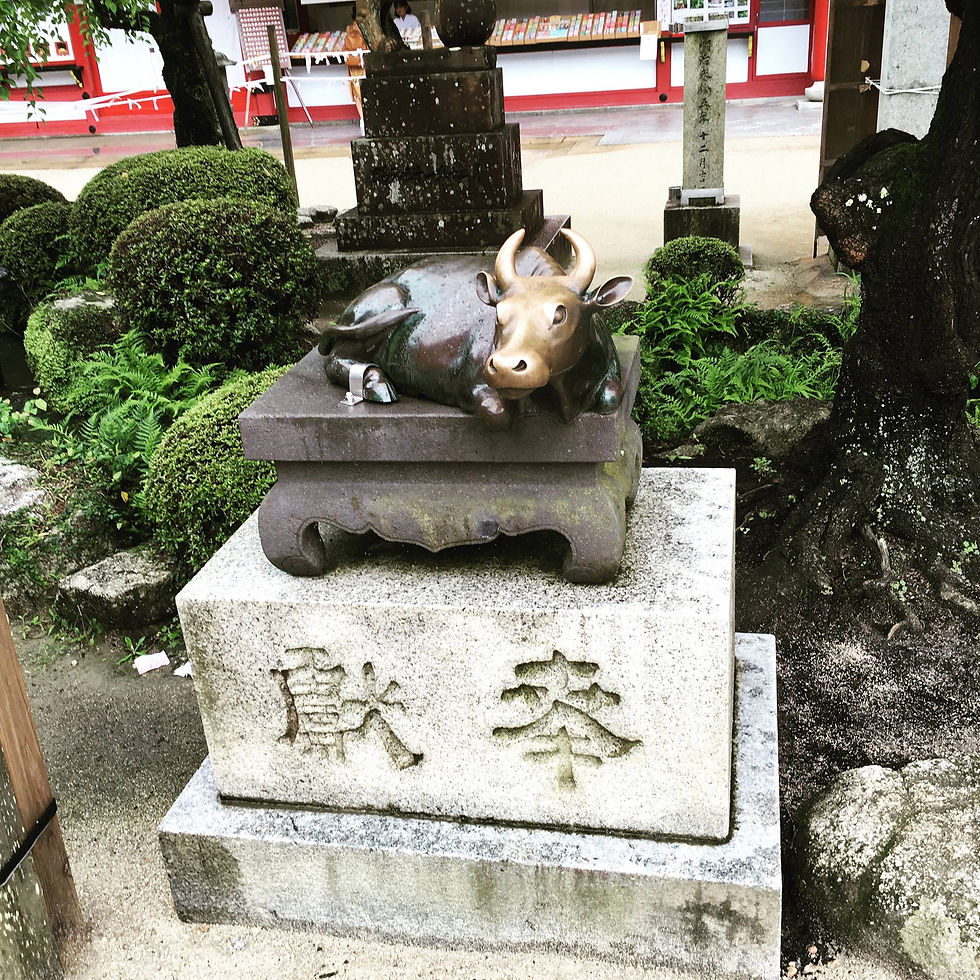Fukuoka 福岡
- amandagoss
- Jul 28, 2016
- 4 min read

Fukuoka (福岡) is the largest city in Kyushu (九州). The first thing I noticed was that the railway station we arrived at was called Hakata (博多) not Fukuoka. This is because the present city of Fukuoka arose when the former port city of Hakata and the former castle town of Fukuoka united in 1889 to become one city. The name Fukuoka was kept however the main railway station is still named Hakata.
However the most fascinating thing I learned about the cities history, was about the Mongolian Invasion in the 13th century. During the first invasion in 1274, the Mongolian armada reached Hakata Bay. The Mongols decimated the Samurai here, but fortunately as night fell after the first days battle heavy rain and wind forced the fleet to retreat. What the Mongols didn't know is that by retreating they sailed straight into an approaching typhoon, which sunk majority of the fleet. Seven years went by before the second invasion occurred in 1281. With the Mongolian armada being three times larger than the samurai forces, Japan was facing almost certain defeat! But in what can only be described as unbelievable, another typhoon hit and it again sunk most of the armada, drowning those on board. Did someone say déjà vu! This left the Japanese believing that the gods were protecting them from the invasion and the Mongolians agreed, abandoning any future attempts to conquer the island nation.
While in Fukuoka we stayed in the busy downtown area. This area was full of shopping centres, arcades and businesses. One of the largest shopping centres was Canal City. I spent most of my free time here exploring the several floors of shops inside. One thing I have noticed about shopping centres in Japan is that many of them contain a water fountain that have shows to music. Upon arriving to canal city, one of these shows was happening with the water dancing to a melody of movie theme songs. It was pretty to watch. Another thing about shopping in Japan compared to Australia is the opening and closing times of businesses. In Japan shops generally open at 10am and shut around 9pm, and no this isn't just grocery stores or larger stores like Target. This goes for every shop in the centre. I personally preferred these trading hours and can only hope that maybe one day in Australia late night shopping will occur every night, not just once a week.

Now one thing a few of us were lucky enough to see in Fukuoka was the Hakata Gion Yamakasa (博多祇園山笠). Now we weren't there for the main race event but we did manage to see a practice run. Even the practice run drew out crowds in the thousands and closed down the streets that made up the 5km course. So I guess you may be wondering who is racing? Well it is a race between beautifully decorated festival floats. Each float weighs around one tonne and is carried... YES CARRIED by the team along the course. I was very impressed as I watched them run down the street with the float hoisted upon their shoulders. Now from where I was along the course I could see the start of the race. A voice over the loudspeaker would call call out how long remained until the next float started. Then when it is time to go the boom gate would be lifted and the drums would bang. Once the float made it around a pole which was located in front of Kushida Shrine (櫛田神社), the festival's host shrine, and back onto the street the drums would stop as the float continued down the course. The voice would come back over the loudspeaker saying the time it took the float to make it around the pole and they would then proceed to introduce the next float and start the countdown until it's turn. All up the practice run lasted around one hour.

Also while staying in Fukuoka we traveled to the nearby town of Dazaifu (太宰府). While in Dazaifu we visited the Tenmangu shrine (Dazaifu Tenmangū,大宰府天満宮). Sugawara Michizane's grave is at the site of this shrine. He was a scholar and politician in Japan during the Heian Period (794 - 1185). Many Japanese people like to make offerings to Sugawara Michizane's spirit as he has long been associated with Tenjin, a shinto deity of education. Many in the group bought Omikuji (おみくじ), which is Japanese fortune telling paper. The fortune that one is granted can range from having a great blessing (大吉) to a great curse (大凶). By tying the piece of paper around a tree's branch, good fortune will come true or bad fortune can be averted. We also explored Kyushu's National Museum while in Dazaifu. The theme of the exhibit in the museum is "Ocean Ways, Asian Paths". As visitors we were able to learn the history of how Japan progressed amidst its interactions with Asia and Europe.


Now it's time to get back on a train and head to Matsuyama (松山). One thing I haven't mentioned yet is the train system in Japan. The railway network in Japan is in my opinion the best in the world. They are fast, efficient, comfortable and for the most part run on time. Also when we were in Tokyo trains came every few minutes. No ten to fifteen minute waits for a city train. The train network is a huge part of infrastructure in Japan which is also constantly being upgraded. The world's longest undersea tunnel, Seikan tunnel is one such example. The electrical system in the tunnel was recently upgraded from 20kV to 25kV to facilitate shinkansen bullet trains (新幹線). The first bullet train was able to use the tunnel this year. I really enjoyed travelling by train in Japan, often being able to catch up on sleep on the many journeys thanks to the comfortable seats.
1. http://asianhistory.about.com/od/japan/a/Mongolinvasion_2.htm
2. http://www.railway-technology.com/projects/seikan-tunnel/
3. http://www.japan-guide.com/e/e4851.html
4. http://www.kyuhaku.com/


Comments